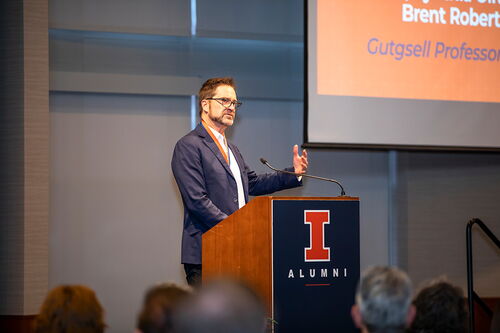Researchers shed light on how influenza evades immune systems

Seasonal flu viruses continually undergo mutations that help them evade the human immune system, but some of these mutations can reduce a virus’s potency. According to new research at Illinois, certain mutations in the genome of influenza A may help counteract the weakening effects of other mutations.
Influenza A causes tens of thousands of deaths in the U.S. every year, despite vaccination efforts. It persists, in large part, due to continual changes in the sequence of amino acid “building blocks” that make up the viral protein hemagglutinin, enabling it to avoid recognition and removal by immune system antibodies. Many of these mutations can reduce a virus’s fitness—its ability to make more copies of itself—raising the question of how viruses compensate to recover their mojo.
In a study published in PLOS Pathogens, Christopher Brooke, professor of microbiology at Illinois, along with Ivan Kosik of the National Institute of Allergy and Infectious Diseases, Maryland, and other colleagues investigated hemagglutinin mutations to better understand the mechanisms by which influenza A viruses maintain fitness despite continual mutation. They focused on influenza A variants with mutations that enabled them to escape antibodies from mice, guinea pigs, or chickens.
To identify the accumulated mutations that restored viral fitness, the researchers sequenced the viral RNA using a supersensitive method called PrimerID sequencing, which enables tracking of all individual viral genomes so that any relevant mutations can be spotted. They found several mutations of particular interest that add a new sugar molecule to the hemagglutinin, thus creating a novel “N-linked glycan” site.
How does this help the virus to replicate? The new sugar allows the virus to regain “Goldilocks” binding to the host cell: not too weak, but not too tight either. In escaping the immune system, the new mutations can inadvertently disrupt this golden binding point, which can be remedied by adding a sugar molecules in the just the part of the hemagglutinin.
These findings improve understanding of the mechanisms that make flu outbreaks so difficult to prevent, and inform efforts to design more effective flu vaccines that are less easily thwarted by continual mutation. The results also demonstrate the value of PrimerID sequencing to provide a high-resolution view of all the mutations present in a given viral population—something that conventional deep sequencing approaches cannot do as accurately or efficiently. This level of understanding is necessary to keep up with the flu, which despite is miniscule size, has managed to outsmart humans each flu season.
Brooke's home department is part of the School of Molecular and Cellular Biology.








